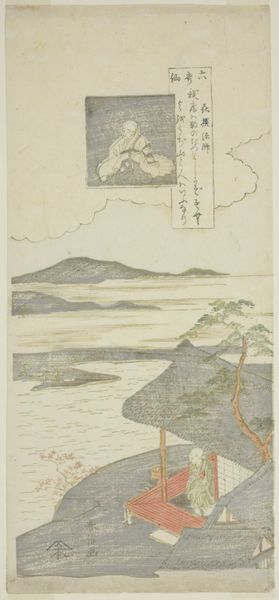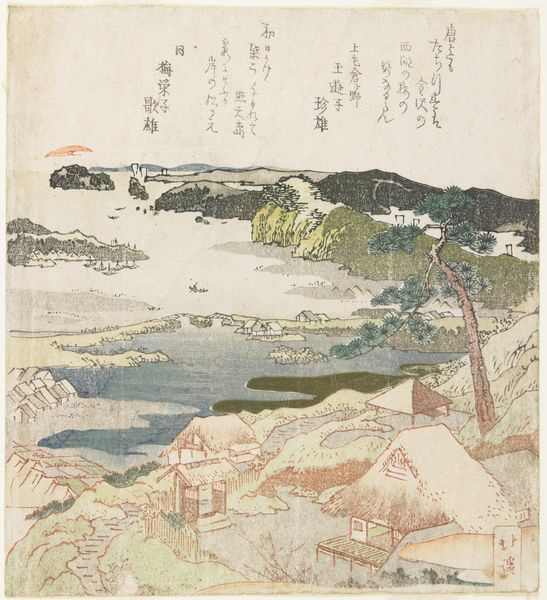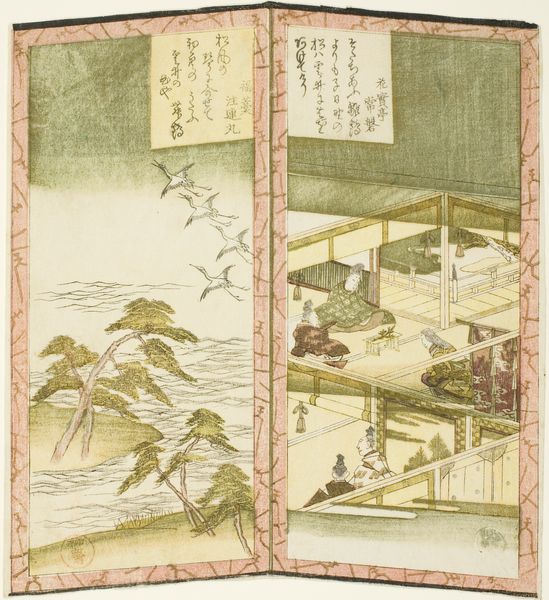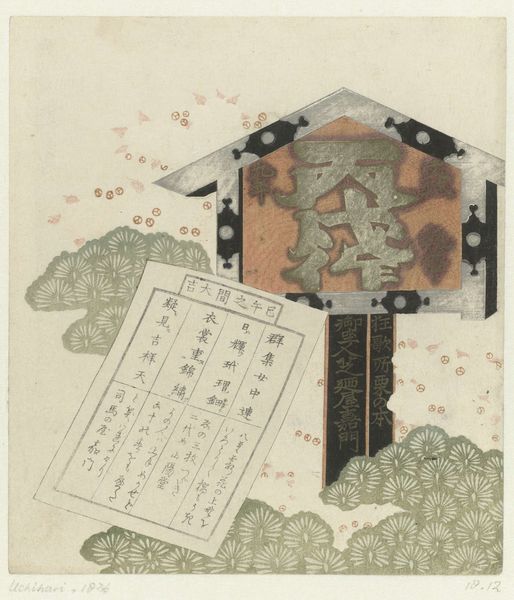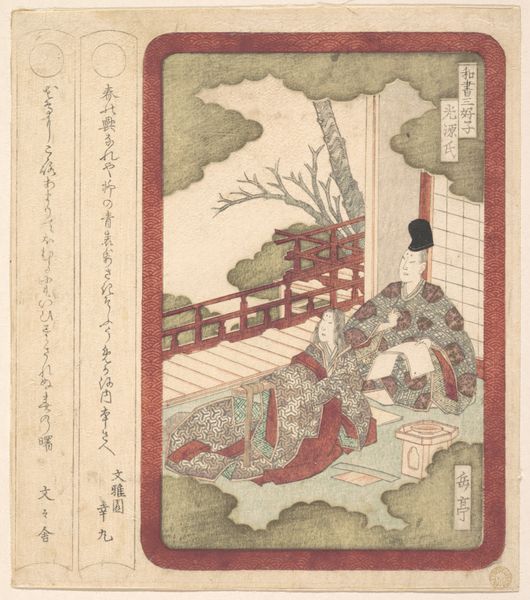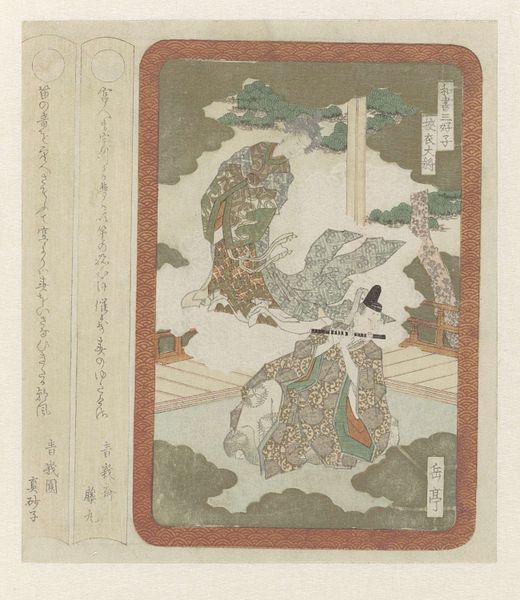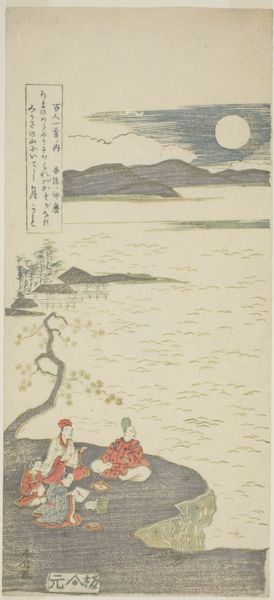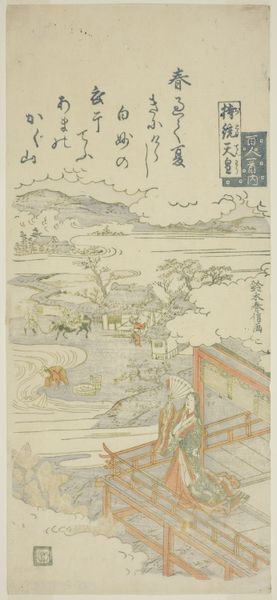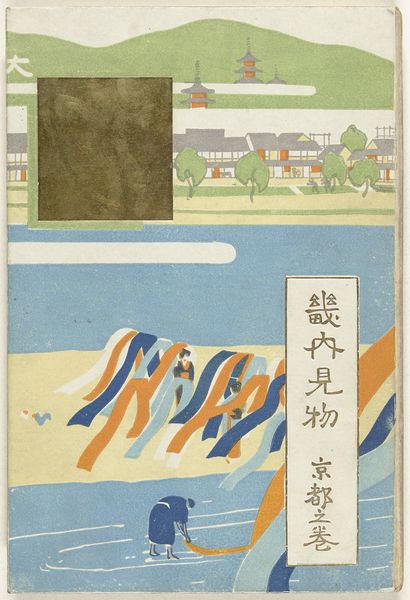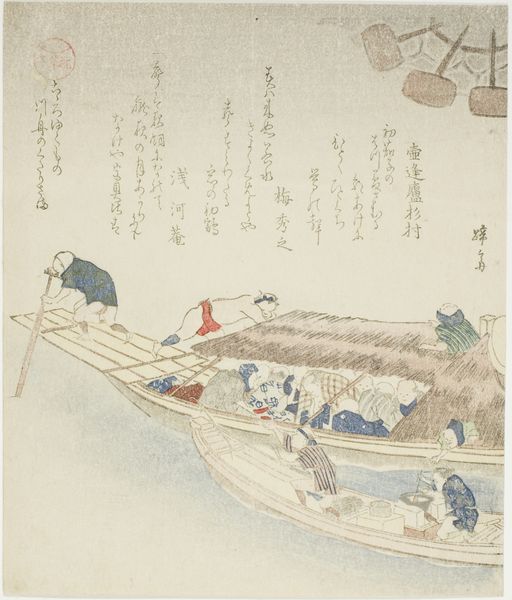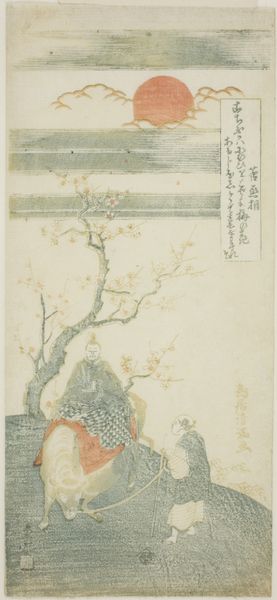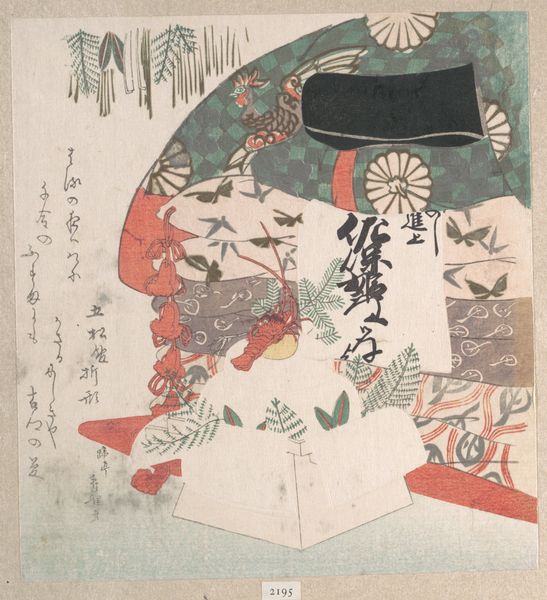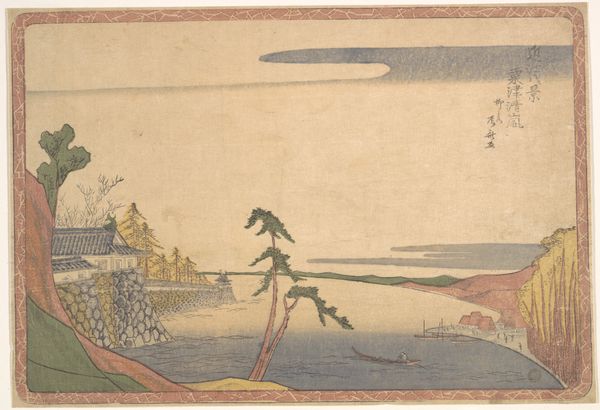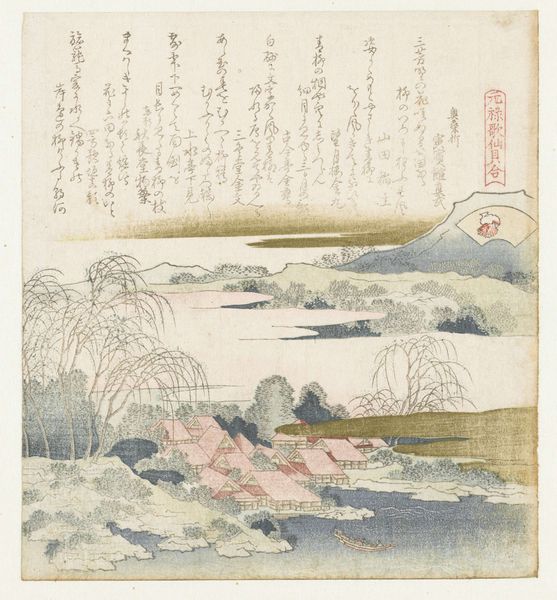
Dimensions: height 181 mm, width 207 mm
Copyright: Rijks Museum: Open Domain
Curator: Welcome. We're looking at Yashima Gakutei's "Three Gentlemen of Japanese Literature," a woodblock print from around 1819-1820. It’s currently housed here at the Rijksmuseum. Editor: It feels like a haiku, doesn't it? This little snapshot, quiet and contemplative. Like a scene from a dream, softly colored and somehow very...private. Curator: Indeed. Ukiyo-e prints like this were incredibly popular at the time, often depicting scenes from everyday life, folklore, or, in this case, idealized depictions of literary figures, imbuing them with a romanticized aura. Think of them as celebrities of their day, elevated to near mythical status through popular culture. Editor: I like that. Celebrities with soul, not just flash. There's something melancholy about it, though. Are they pondering a lost poem or a lover's goodbye? The one overlooking the scene on what seems like a balcony has a dreamy presence. He looks straight out of a love story! Curator: Well, it's thought that at least one is suggested to be Ariwara no Narihira, a poet. Gakutei himself was associated with various literary and artistic circles; understanding the piece within those circles helps us grasp its intended audience and their values. This wasn’t mass-produced for just anyone; these prints held significant meaning and resonated among educated elite who recognized those portrayed or suggested. Editor: So it's exclusive fan art. I get it! Seriously though, this piece reminds me of a stage setting, of dramatic performances in intimate salons or teahouses... The print’s colours are quite muted. How’s that achieved with woodblocks, anyway? Curator: It is impressive isn’t it? Multiple woodblocks, each with a different colour, are carefully carved and then precisely aligned to build the final image. The subtle gradations of color contribute to that dream-like quality you observed, I think. It's like the artist wanted to capture not just what the figures looked like but what it felt like to be in their presence, as imagined figures. Editor: To catch that in a print and transport it over a vast gulf of years and space... Amazing. Looking at this I think, sometimes, a pause from noise is really the thing that inspires our souls. Thanks. Curator: I agree completely. By delving into its history and the circumstances of its creation, we start to discern how and why its beauty resonated. Thanks for your perspective, both art and scholarship are lucky to have you!
Comments
No comments
Be the first to comment and join the conversation on the ultimate creative platform.
